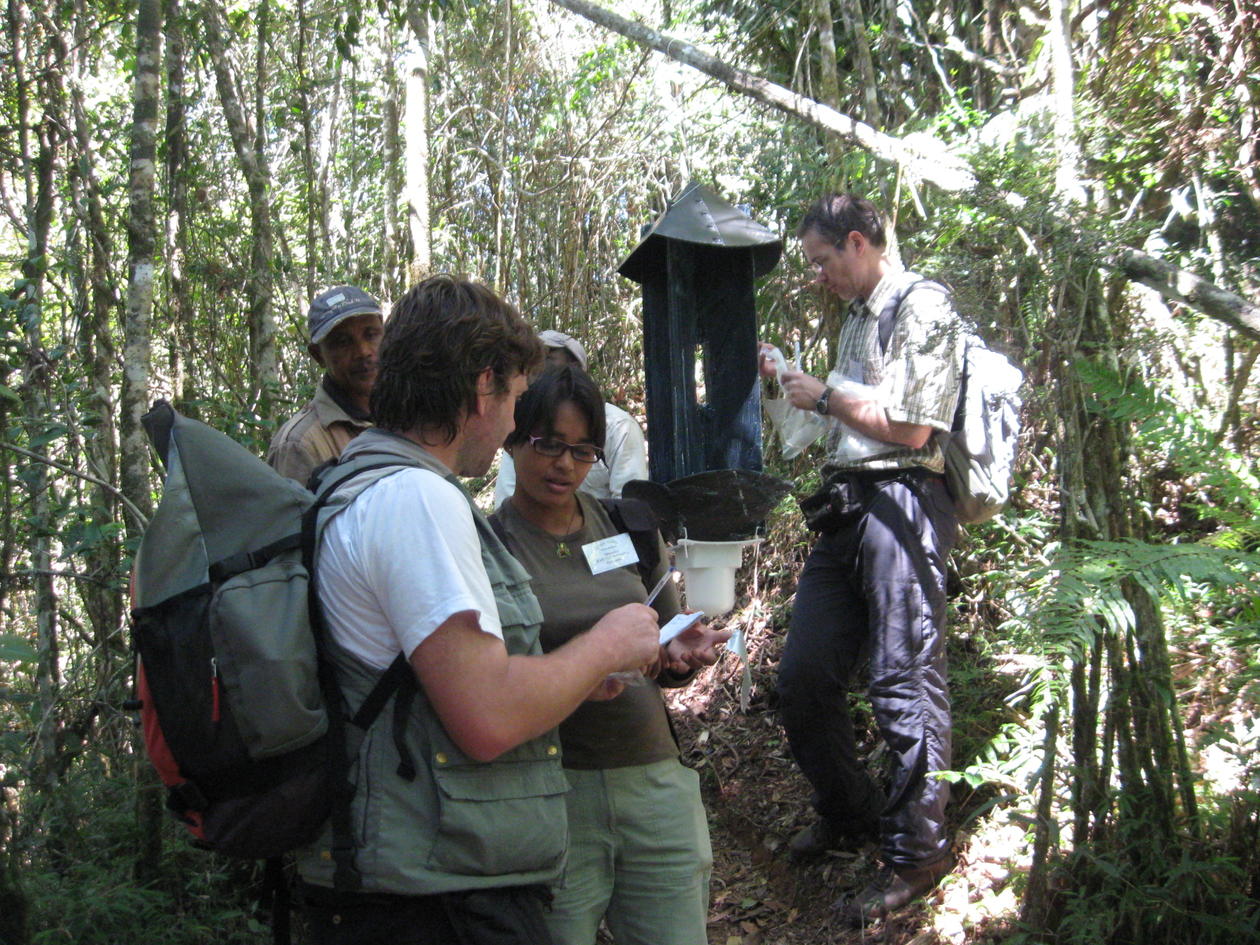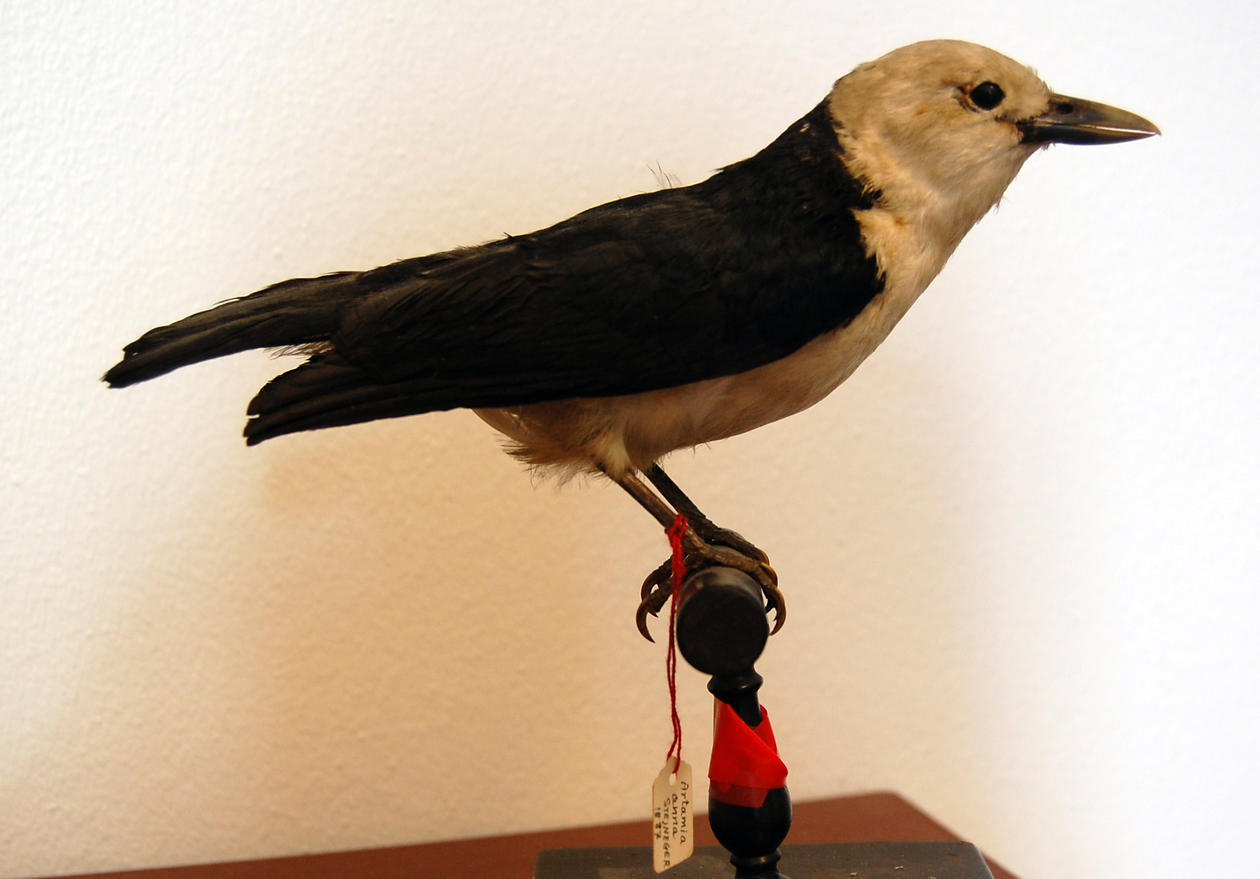Zoologists search for unknown animals on Madagascar
Thanks to gifts from both ship’s captains and other long-distance travellers in the past, you can now find examples of animal life on Madagascar at the University Museum. Zoologists from the Museum have now been to the island once more and they found additional animal species – in line with old traditions, but with a new approach.
Hovedinnhold
Bergen-born Leonard Hess Stejneger (1851-1943) was a famous zoologist who discovered and described many unknown animal species, most of them amphibians and reptiles. In 1881, he moved to the United States with his family and became a member of the recognised Smithsonian Institute in Washington DC. But as a young man, before he moved, he described an unknown bird species, Artamia annae of the family Vangidae. This particular bird was collected by a Norwegian ship’s captain who worked for the Det norske misjonsamband (Norwegian missionary society) in Madagascar, and it was later deposited in the Natural History Collections (DNS) in Bergen. The stuffed specimen still exists in the collections of the University Museum. Preserved animals or plants like these that have been described in detail for the first time are called type material, and they are the most valuable objects in a natural history museum.
To Madagascar in 2012
The main goal of the field trip from the University Museum of Bergen to Madagascar in October 2012 was to collect new material of hitherto unknown species. The participants of the field trip – Associate Professor Bjarte Jordal, Collection Manager Steffen Roth, and PhD Candidate Dario Pistone – did not focus on the collection of birds this time, but of insects, and bark beetles in particular. Madagascar, the world’s fourth largest island, is known for its many so-called endemic species (species belonging to a particular country or area that have a restricted distribution). The bio-geographical history of the island might shed some light on the speciation of the bark beetle family in relation to their adaptation to different kinds of trees that are used as host plants.
Tree, fungus, and bark beetle
Many species of this type of beetles are involved in a symbiotic relationship with microbes, particularly so with fungi that are actively cultivated by the wood boring beetles. They carry fungal spores in specialised pockets in their beetle bodies and infect the colonised host plant by excavating deep tunnels in the dying plant. The fungi break down the wood of the trees and create fungal mycelia, where the beetle’s larvae later can graze on the newly created spore-bearing stalks. How this complicated connection between tree, fungus, and beetle affects the speciation of bark beetles is the main theme for a newly started research project at the University Museum supported by the Research Council of Norway. Bark beetles are one of the most species-rich insect groups on earth, in line with other groups of weevils in which the bark beetles belong. Before different hypotheses as to why the number of bark beetle species is so high can be tested - by means of, among other things, genetic analyses - one has to collect more beetles, their fungi, and study their host plants.
Several tens of new species
The field trip to Madagascar was in that respect a success and several tens of new bark beetle species were discovered. In addition, it was investigated to what extent the tropical rainforest in Ranomafana National Park is affected by the so-called invasive bark beetles. These are species that have invaded many tropical countries in modern times indicating disturbance from human activity (felling of timber or planted flora). Interesting by-catch included true bugs, leaf beetles and other insects, among them also some unknown species. These collection activities will add to the amount of type material in the University Museum’s collections and thus enhance the scientific value of the collection.
While Stejneger – who travelled extensively in America and Asia – never observed «his» bird species in Madagascar in person; his successors, however, managed to catch some brief glimpses of Artamia annae. It gave the expedition members a sense of following in the footsteps of a renowned naturalist from old Bergen.


